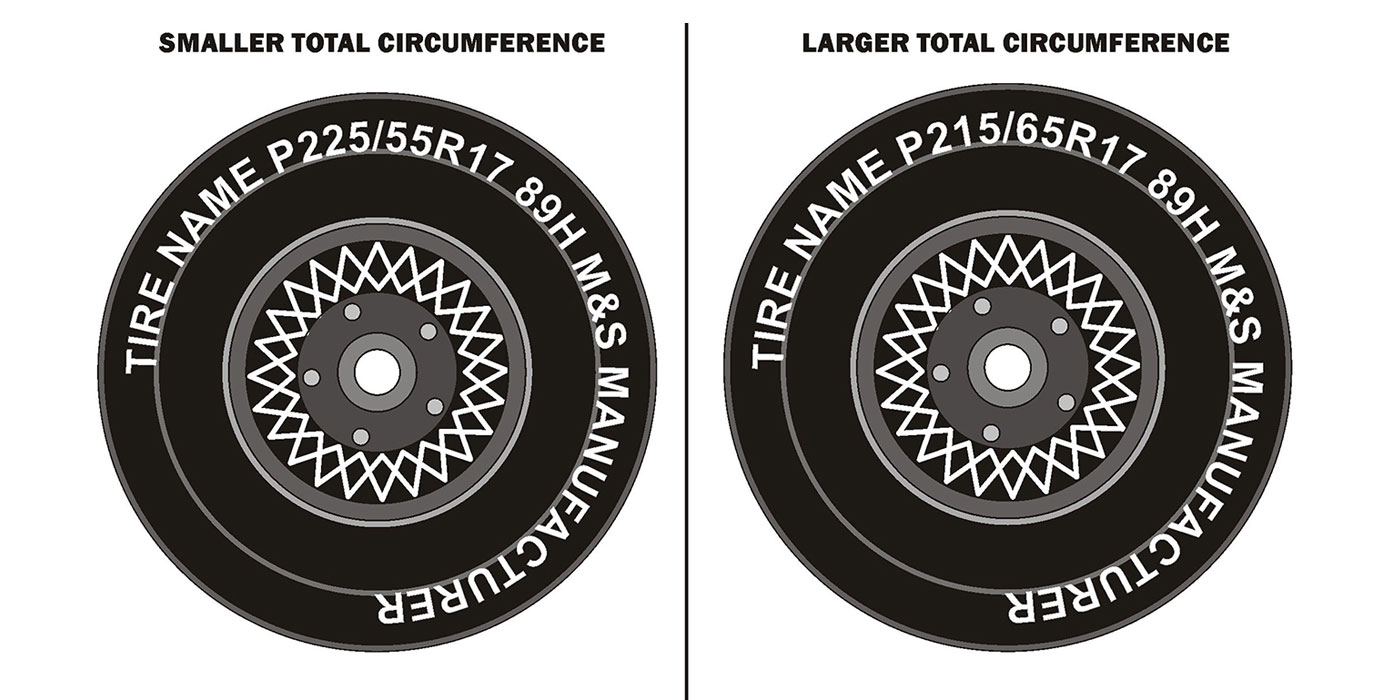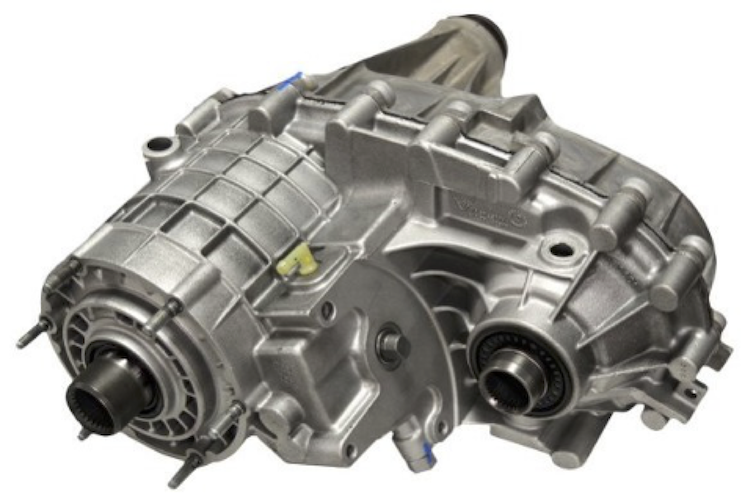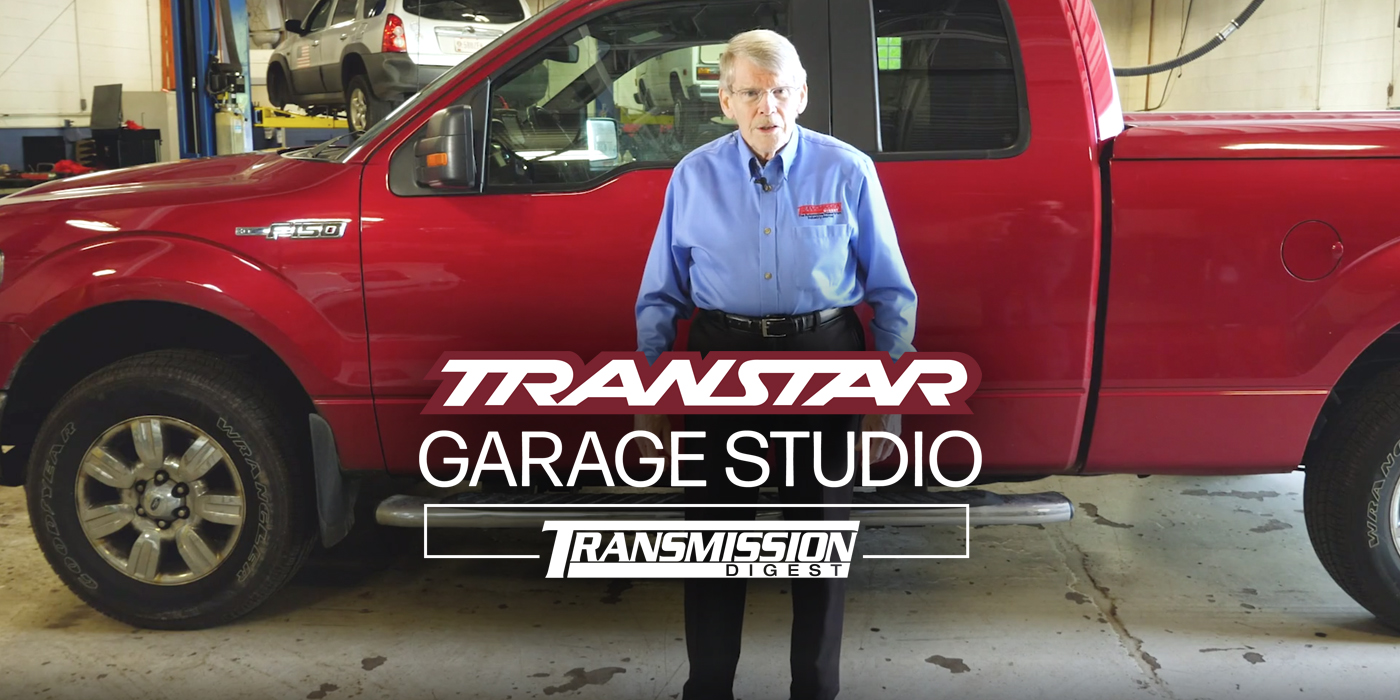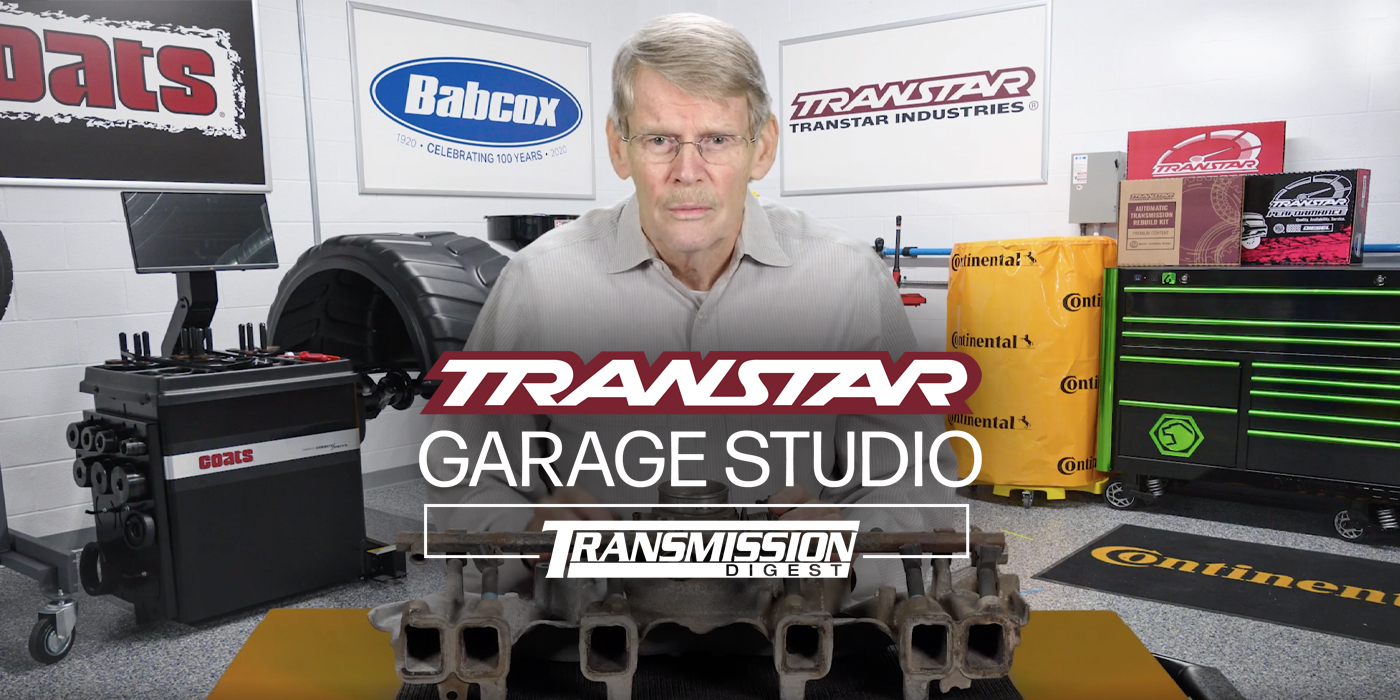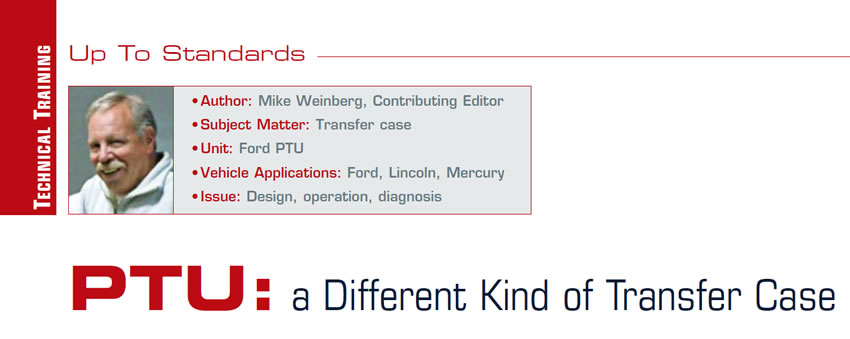
Up to Standards
- Author: Mike Weinberg, Contributing Editor
- Subject Matter: Transfer case
- Unit: Ford PTU
- Vehicle Applications: Ford, Lincoln, Mercury
- Issue: Design, operation, diagnosis
The main design parameters for most late-model cars have been front-wheel drive (FWD) with transverse-mounted engines. This is a convenient packaging system for the manufacturer and has been for many years. The current trend of increased safety and performance has made many of the manufacturers add all-wheel drive (AWD), which sends power to the rear wheels for better traction and stability. The traditional transfer case, which divides power to the front and rear axles on vehicles with north/south engine placements, is unusable here.
For the purpose of proper understanding, AWD systems are considered full-time operations with no driver input, as opposed to four-wheel-drive (4WD) systems that have switches that the driver can activate. The “transfer case” that is used in FWD vehicles is called a power transfer unit (PTU), which is attached to the transaxle and sends power to a rear differential. We will look at the Ford units in this article, as Ford has a large dog in this hunt with PTU-type units in the Ford Fusion, Flex, Escape and Taurus; Lincoln MKT, MKS, MKX, MKZ and Zephyr; and Mercury Milan from 2007 to 2012. All the other manufacturers are also producing PTU-type designs. Ford has AWD units and what it refers to as ATC (active torque coupling) units, which are always active without any input from the driver.
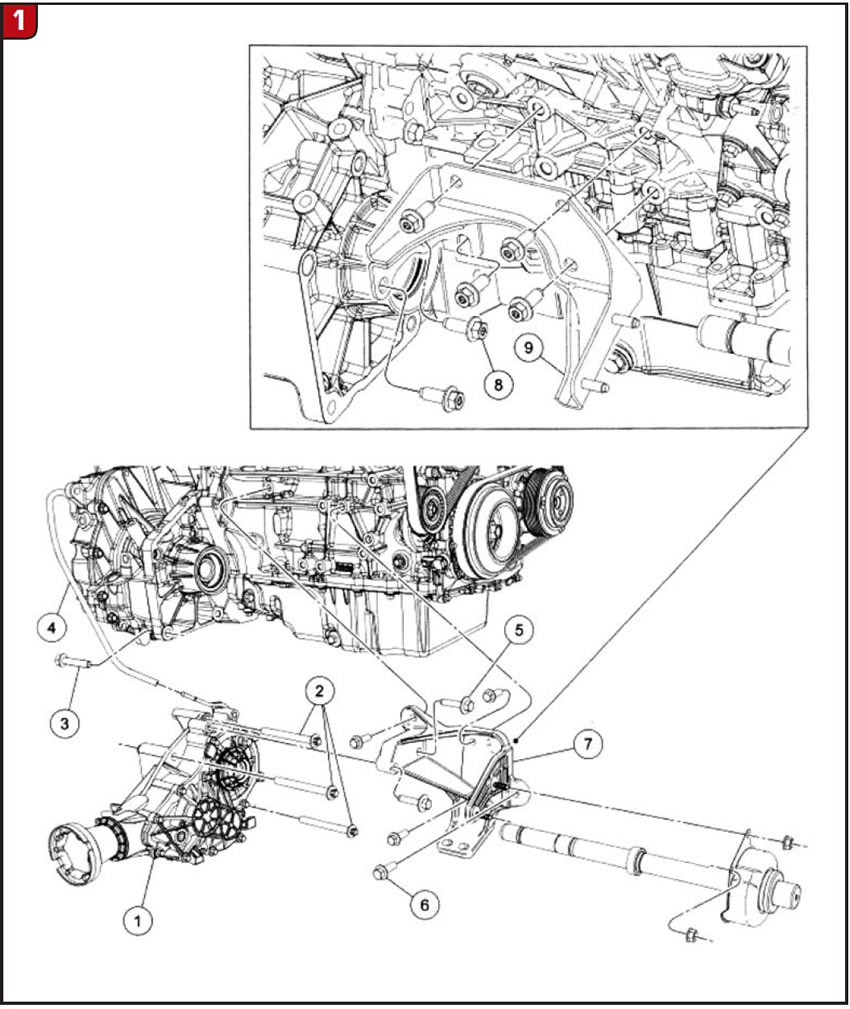
ATC systems continually adjust torque flow between the front and rear axles by monitoring a number of inputs. Under normal conditions most of the torque is delivered to the front axles. Using the antilock-braking system (ABS) to measure wheel speed, the 4×4 control module will increase torque levels to the rear axle to control or stop perceived wheel slip.
This goes back to the importance of tires that are matched in circumference and tire pressures. Using a doughnut type of spare will cause the ATC system to shut down until the tire is repaired or replaced. The components involved in these systems include the PTU, a 4×4 control module, a rear axle and an ATC solenoid on the rear axle. The 4×4 control module also provides the duty-cycle operation to the brake system and receives inputs from the throttle-position sensor, transaxle range selection from the PCM, brake-system status through the ABS module and wheel-speed reading from all four wheels.
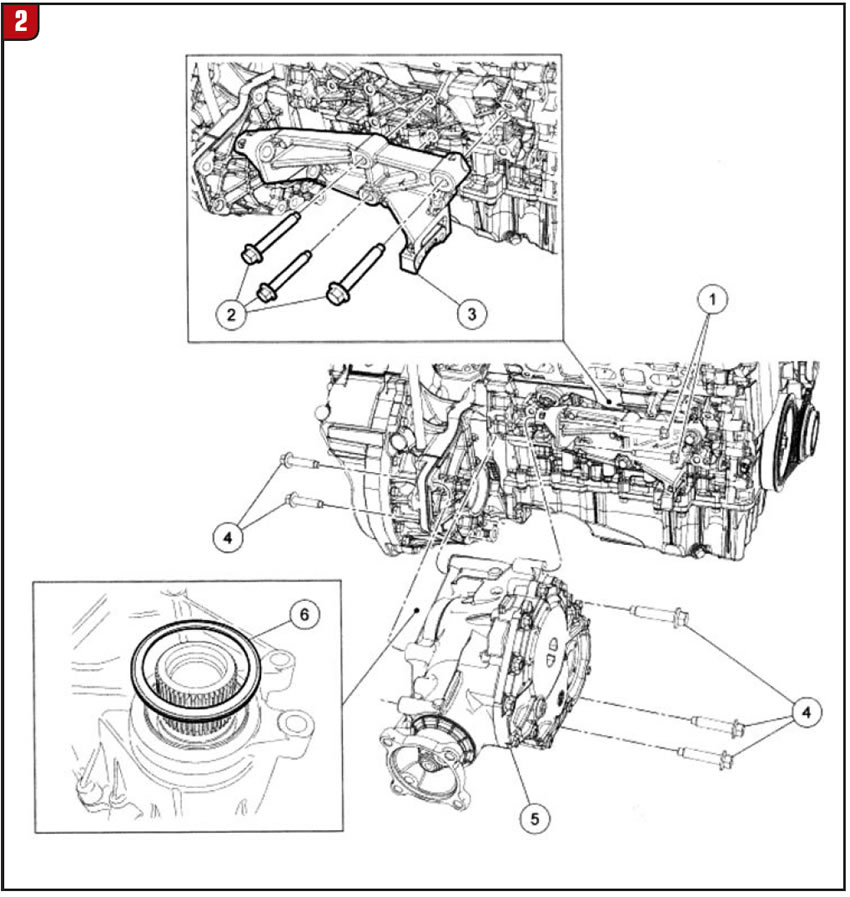
All this information travels over the high-speed controller area network (HS-CAN). The 4×4 control module outputs a solid-state clutch with a pulse-width-modulated signal to the ATC solenoid on the rear axle, torque-transfer-percentage command signal to the ABS module and a torque-request-available signal to the ABS module. If the unit overheats because of extreme operation or other faults such as mismatched tires, the ATC will enter a locked mode. Further temperature increase in the locked mode will result in a shutdown of the AWD system, reflected in a message “AWD OFF” in the instrument cluster.
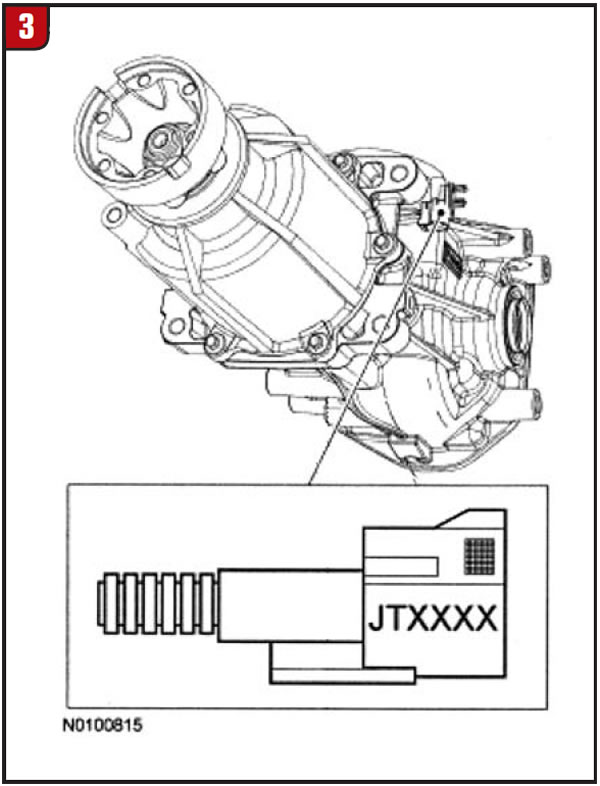
An ATC barcode is etched into the ATC wire harness at the top of the rear drive axle (Figure 3). The control module needs this barcode information to synchronize the clutch characteristics of the ATC with the output-torque-level design parameters. If you replace a rear axle or a 4×4 control module, the module must be re-flashed with the barcode information to operate correctly. Figure 4 shows the location of the identifying bar-code label on the PTU.
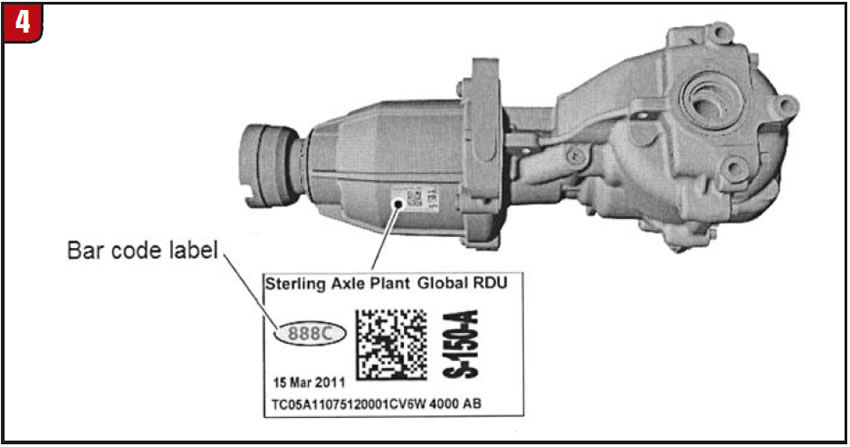
With a properly calibrated scan tool connected, the module can throw 15 diagnostic trouble codes to help in detailed system diagnosis. At this time the only parts serviceable in the PTU or rear axle are seals and flanges. Do not disassemble either unit, as service parts are not available and replacement of the entire unit is necessary.
Most of the PTU models use about 18 ounces of fluid. The gear oil used suffers from heat breakdown because of usage and the lack of cooling airflow resulting from the placement of the unit close to the firewall and floor. The petroleum lives on, but the additive package breaks down because of the heat, resulting in bearing and seal failures. We are doing research to find a way of lowering the operating temperatures of these units. Part of the problem may be due to heat soak after the driver turns off the vehicle, which used to cause premature lube-related failures in earlier-design turbochargers.
Our learning curve keeps increasing, but the good side is that we now have more components that will need our attention. The aftermarket will find a source of supply for these components, and a new sector will arrive for rebuilding these units. Every cloud has a silver lining.

Mike Weinberg is president of Rockland Standard Gear.










